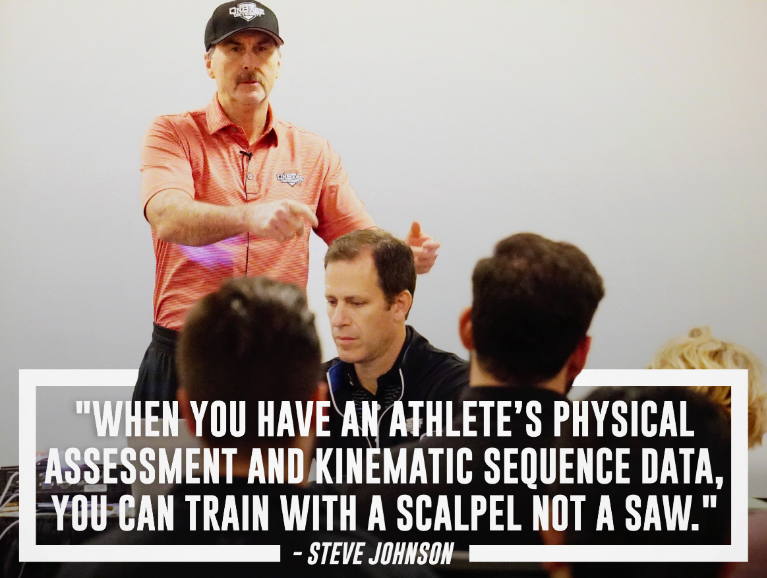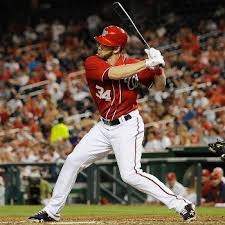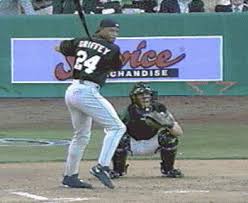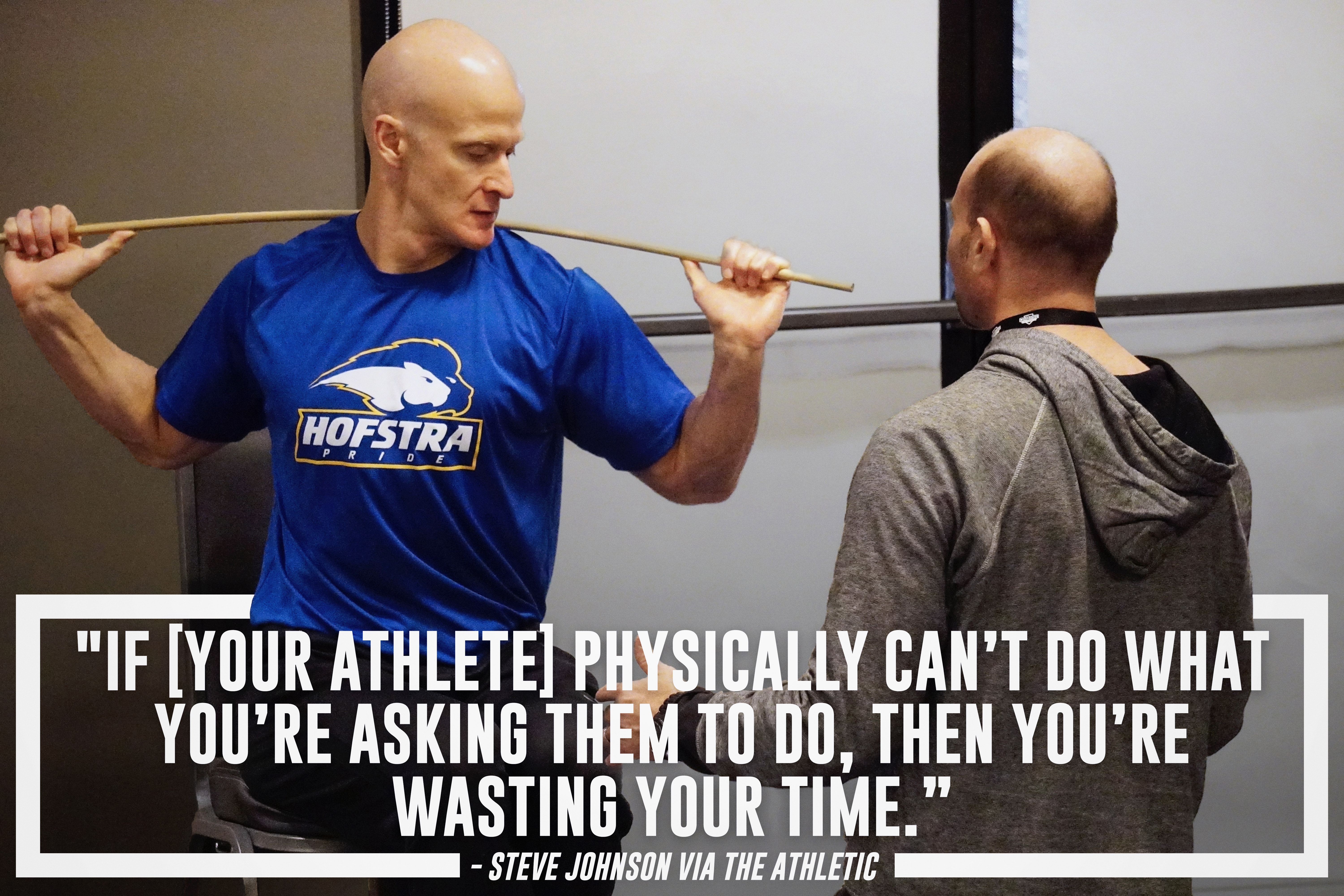The Myth of The Perfect Baseball Swing
Tue May 21, 2019 by Justin Stone

People often ask me, “What do you wish you would have done 10 years ago that you do now?” Implementing technology that didn't exist at the time is the easy answer, but I'd also note that I've changed my approach for evaluating athletes over the last decade.
Today, I won’t touch a hitter or give them mechanical advice without doing a movement assessment. If you don’t know their movement capabilities, your just as likely to mess them up as you are to help them.
Baseball is quick to compare swings of different players, but that doesn’t mean that deep under the surface Player A - who may look like Player B - moves anywhere near the same way.
An optimal position or pattern for one player may be inefficient for another.
Let's look at this with regards to separation of upper body and lower body of elite hitters. Is Bryce's position here "Good?" Good is a relative term, but for the majority of hitters, this type of hip and shoulder separation might create disconnection and slack.

For years, this was thought to be the gold standard of torque and hip and shoulder separation. How many young hitters tried to emulate his swing? So, if Griffey was great and got a lot of hip and shoulder separation, then more hip and shoulder separation is better, right?

Which also means this is not as good, as whippy, as powerful (insert whatever hitting superlative you want here). Yet he still hits one of the hottest balls in MLB - one of which was 117mph last year.

Griffey Jr.'s famous "Warehouse Home Run" in the 1993 Home Run Derby went an estimated 465 ft. Kyle Schwarber's longest blast, an estimated 470ft. These swings are different, yet both effective and powerful.

So how can it be both ways? Where less separation can be as fast and powerful as more separation? And what should we be training our players to do? Train Griffey to make Schwarber's move and it wouldn't be as explosive (here's a thread I posted on Twitter that demonstrates how core mobility can influence sequencing).
So how do you find the "Sweet Spot" of separation? You first have to find your "Sweet Spot" of mobility. As Dr. Rose likes to say, "assess, don't guess."
If we try to match moves of different players with different mobility or physical capabilites, it's more likely a detriment to the player, rather than helpful.

| UPCOMING SCHEDULE OF ONBASEU HITTING AND PITCHING SEMINARS |
I had an inquiry on a high level pro from outside our organization who said, “My organization wants my style to pattern after Betts.”
I said, “Does your org know Betts’ mobility numbers?”
“No.”
I asked, “Do you have your mobility numbers?”
“We’ve done some stuff, but I’m not sure.”
Just because two players look alike does not mean that they move alike.
Choosing a swing model that you like aesthetically doesn’t mean it’s appropriate for you.
A doctor doesn’t write a prescription before an evaluation, but many coaches do every day.
— OnBaseU (@OnBaseU) December 13, 2018
If you aren’t assessing a player’s movement capabilities, you can’t be sure if the limitation is their body or their technique. https://t.co/Hw1y01ZIsm pic.twitter.com/CyFwGN9s8U
If that sounds like you need to be a movement specialist in order to be a good hitting coach - that’s true.
The resources are out there. Otherwise, we are doctors prescribing medicine, treatment plans, surgeries just based on how a patient "tells" us they feel - without any follow-up tests. Ludicrous right? Yet, our industry has done it this way for decades.
There’s no excuse for that anymore. To help players:
1) You need to learn to be a movement specialist, understand movement capabilities, and learn how to test and assess
2) You need to test vast amount of players. It’ll help you understand movement styles and see similarities.
3) Learn to apply correct loading mechanisms to the movement capabilities of the hitter
4) Stop guessing

Justin Stone is the Biomechanics Consultant for the Chicago Cubs and owner of Elite Baseball Training, a technology-infused instructional company in Chicago, IL. Justin was a two sport Division 1 athlete (football and baseball) at Eastern Illinois University graduating in 1998. He became a full-time, Division 1 baseball coach at Indiana State University at the age of 22. While at Indiana State, Stone completed his Master's of Science in Kinesiology. Stone was hired by the Chicago White Sox organization in 2004 and performed a variety of roles including being lead instructor at the Chicago White Sox Training Academy. In 2011, Stone opened Elite Baseball Training, which combines his background in kinetics and biomechanics into a technology-infused teaching approach. Elite consults for a variety of companies looking to push technology further into the game. Stone has worked in the USA Baseball program and was on the National Team selection committee in 2012. He started "guest instructing" for the Chicago Cubs in Spring Training, 2016, and the Cubs later formalized a role for him doing biomechanical assessments and testing throughout the entire organization. He is FMS and TPI certified.